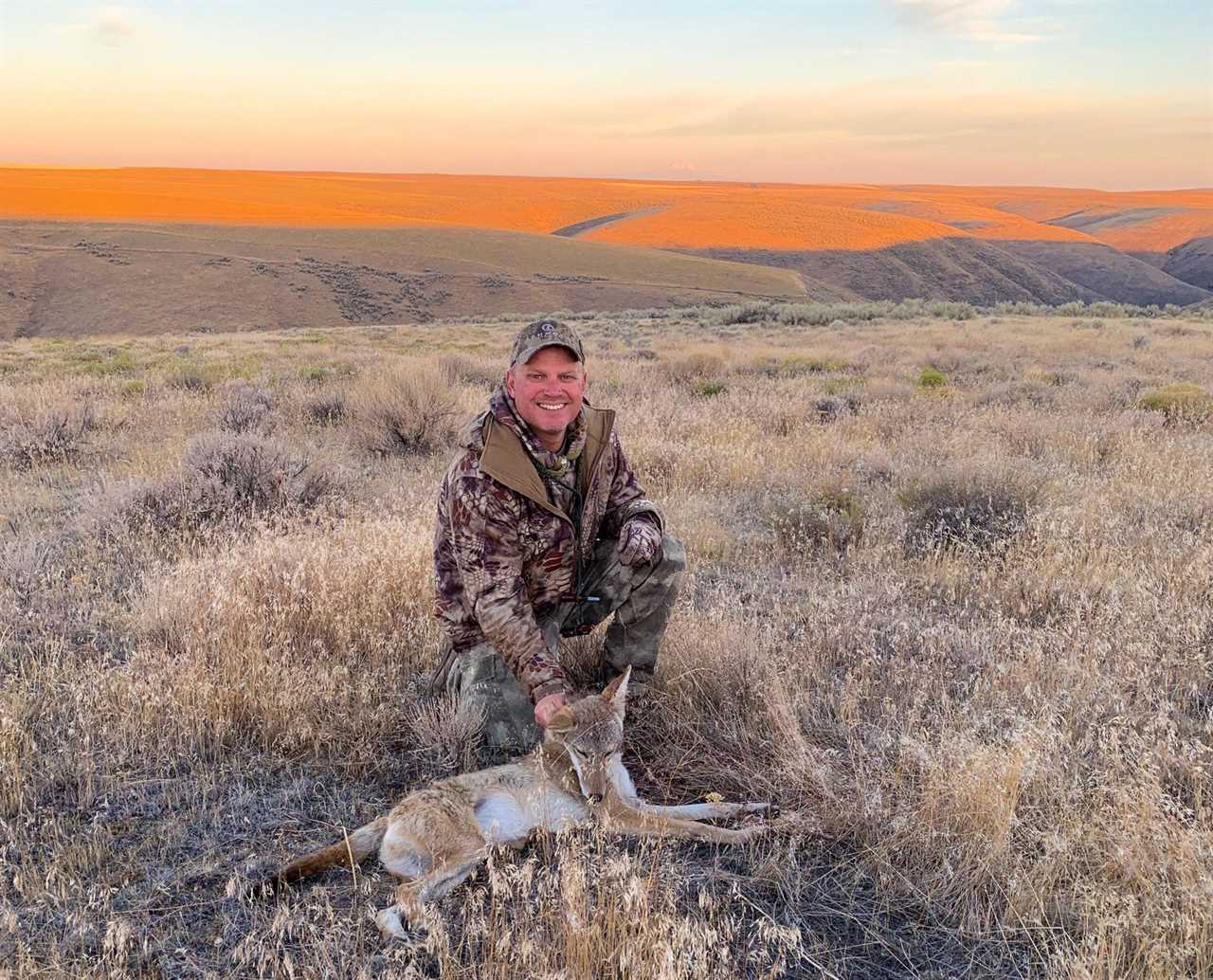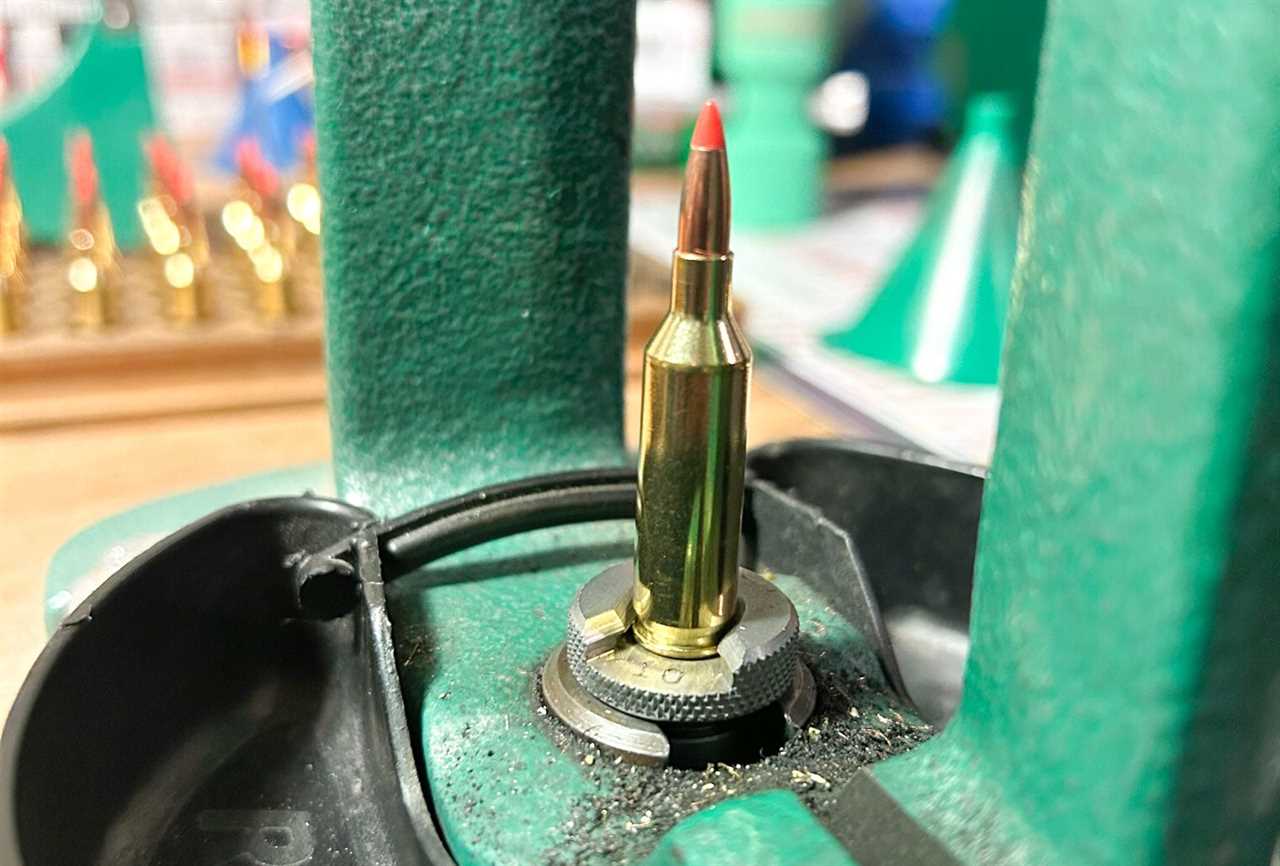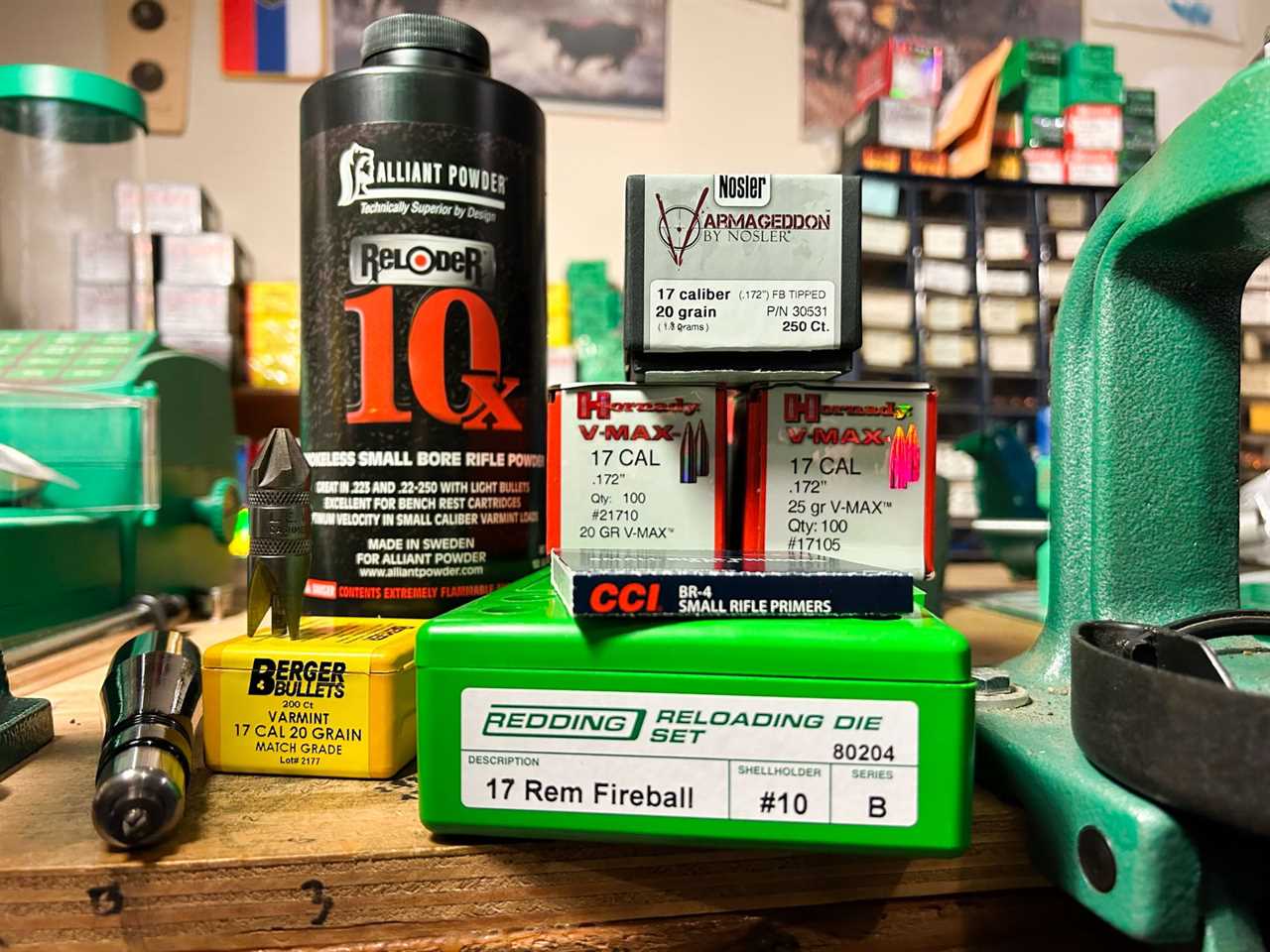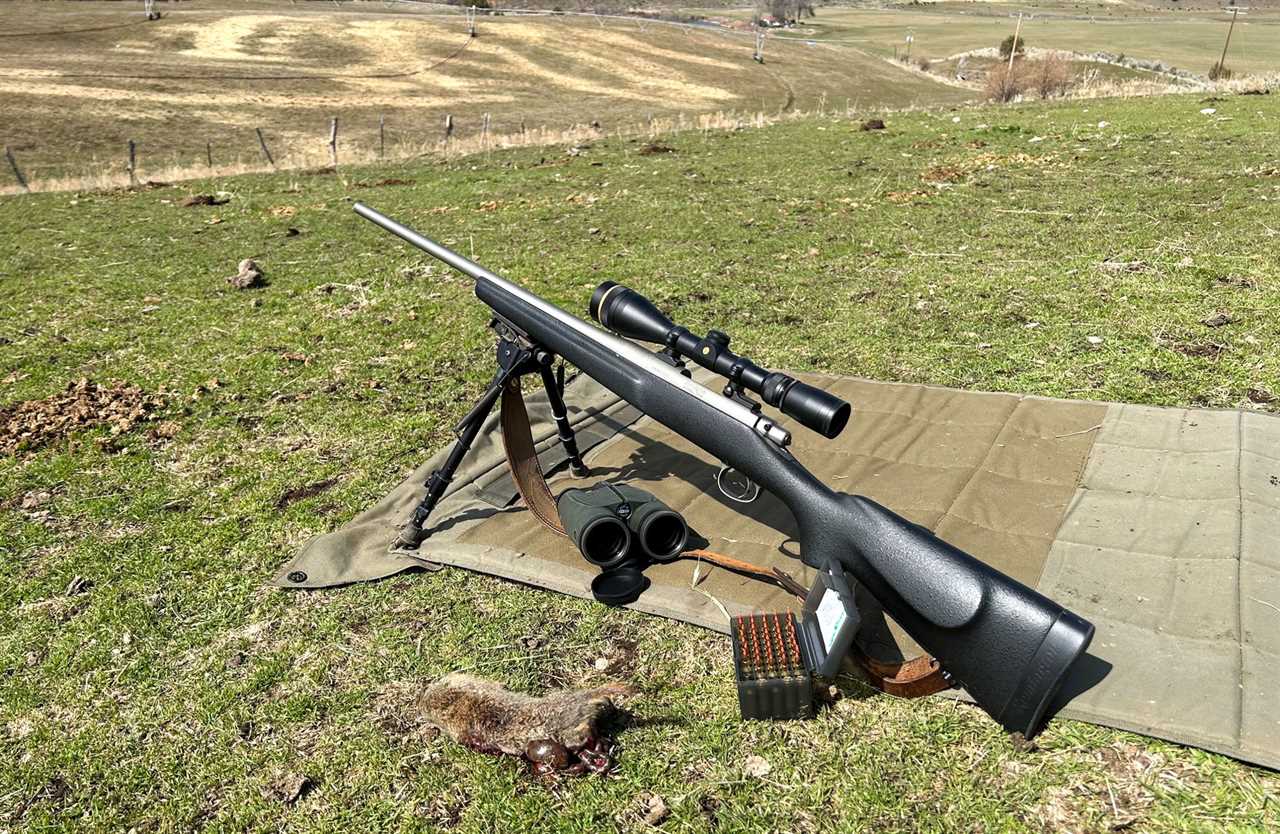Remington chambered the Model 7 in the .17 Fireball for a spell. Pat Mundy
We may earn revenue from the products available on this page and participate in affiliate programs. Learn More ›
As any good reloading manual will tell you, the first successful (commercially at least) attempt to neck the .221 Fireball case down to .17 caliber was the .17 Mach IV. This cartridge was introduced in the early 1960s by Vern O’Brien, a well-known gunsmith in the Las Vegas area. Who initially requested the caliber, or whether Mr. O’Brien simply realized that the case and bore diameter would be well matched is a matter for conjecture, but whatever the case the .17 Mach IV has certainly had a following for around 60 years.
Enter Remington. Early in this century, Remington decided to introduce a new version of the .17 Fireball, similar in many regards to the Mach IV but standardized and optimized for mass production. Instead of a custom rifle, varmint hunters now would have access to brass, standard (read, less expensive) dies, rifles and factory ammunition. The first offerings were svelte Model Seven CDL sporters and various varmint configurations of the short action 700 platform, and factory ammunition was produced using a 20-grain tipped varmint bullet at over 4000 fps and a 25-grain hollow point at over 3700.

The author with a coyote that fell to a .17 Rem. Fireball Pat Mundy
Sadly, the cartridge enjoyed only a few years in the Remington lineup before various factors contributed to Remington’s demise and a long production interruption ensued.
Today, Remington once again has the .17 Fireball ammunition in its lineup. So too does Nosler—and both companies offer cartridge cases. Hornady, Nosler, and Berger offer bullets, and dies are readily available from most major manufacturers. I for one couldn’t be happier with the result—as the .17 Fireball fills a nice role in any serious varmint hunter’s battery and is both mild and economical to shoot.

The .17 Fireball is an ideal option for reloading. Pat Mundy
Handloading the .17 Fireball
Handloading for the .17 Fireball is fairly straightforward and most of the .17 Fireball rifles I have owned or been around have been quite accurate and tolerant of a wide range of components.
As Jim Carmichel once said “The case is the font from which accuracy flows.” There’s no doubt that the case makes a lot of difference in small cartridges, and fortunately, brass is easy to come by for this caliber. Whether you choose to buy factory fresh cases or make them (as some more masochistic handloaders insist on doing), quality is very good. The original Remington brass was somewhat lighter than current Nosler brass—which in my testing means that charges in the Nosler brass needed to be reduced approximately one grain to reach the same velocity (and pressure). Both brands of cases are easy to work with—and require minimal preparation to provide consistent results on paper and in the field.
Trim and Chamfer Brass
My regimen is very simple. Since I usually plan to shoot both predators and colony varmints, I like to have a lot of cases on hand. My prep consists of trimming to a uniform length (and I usually trim a little under the trim-to length listed in books, perhaps .002 in. to .004 in. under) to minimize the need for future trimming. I run all my cases over the expander ball of my sizing die to make sure cartridge mouths are round. I chamfer both the inside and outside of the case mouth, putting a slightly more aggressive chamfer on the inside because most .17-caliber bullets have flat bases, and I want them to get a good, clean start during seating and minimize the risk of damage to the all-important heel of the bullet.

There are plenty of good bullets to choose among when handloading the .17 Fireball. Pat Mundy
I debur flash holes. Do I think this makes a big difference? I honestly can’t tell, but as I’ve mentioned in previous articles—see these stories on the .222 Rem. Mag., .17 Hornet, .17 Remington, .221 Rem. Fireball, and .22 Hornet—it makes me sleep better at night. Particularly in cases with very small internal volume where consistent ignition is important to consistent accuracy. I don’t usually uniform primer pockets until after the first firing. This is simply because my Holland’s primer pocket uniformer is also my preferred primer pocket cleaner. So after the first shot they get the works.
Tumble and Neck Size
After my first firing, I tumble my cases for a few hours in treated corn cob media with the primers in. “Primers in?” you say. Yes. One of my biggest annoyances is going back to make sure every flash hole is not obstructed with a piece of media when I tumble cases with the primers out. Therefore, for high volume reloading chores, I clean them with the primer in and let the decapping pin push out any stubborn piece of cob that I miss.
I then size most (but not all) of the case necks on a standard FL Sizer die from Redding. I check the case length of a random sample of cases to make sure that they are within the length tolerance and also to understand how much they stretch on the first firing/sizing operation. In a case like the .17 Fireball, it usually isn’t very much—maybe a couple of thousandths if everything is put together properly and there isn’t too much drag on the expander ball during the sizing operation. If your cases have thicker necks and your expander is a little on the large side, Redding sells a wonderful dry neck lube that will greatly ease the passage of the expander ball and reduce wear and tear on the dies.

The .17 Fireball is at home on a hill perched above a field full of gophers. Pat Mundy
Peak Performance from the .17 Fireball
After sizing my cases, I prime, charge and seat bullets in that order (of course). In each step, there are a few tricks that seem to have made a difference in the .17 Fireballs I have owned. Breaking them out:
Primer Sensitivity
Primers are important in small cases, and variability between primers can make a tremendous difference both in paper accuracy and ballistic uniformity of a particular load. The .17 Fireball, being a small case, can be particularly sensitive to primer choice and for that reason, trying several different brands and types of primers can provide pleasing results. Perhaps peculiarly, my rifles have preferred either CCI BR-4 or Federal 205 Match primers. My sample is relatively small—I’ve only had three .17 Fireball rifles—but I usually start there. Other good choices include the Remington 7.5 BR, the Winchester Small Rifle and Small Rifle Match, RWS Small Rifle, and the CCI 400 and 450.
Best Powders for the .17 Fireball
Many powders work well in the .17 Fireball, which is serendipitous. I’ve had good luck with Benchmark, IMR 8208XBR, VV N-130, AA-2200, AA LT-32, H-322, and RL-10X. Other powders I’ve seen work well in other rifles include H-335, CFE BLK (with 20-grain bullets), and VV N-133.
As a rule, most of the powders that work well in the .223 Remington also work well in the .17 Remington Fireball. A point to remember with all .17-caliber cartridges is to use care during the actual charging process—particularly with extruded powders. The combination of a .17-caliber powder nozzle, .17-caliber case mouth and extruded powder can result in bridging—where all the charge doesn’t drop into a case and a little drops into the next case in the next charging operation.
The resulting overcharge can result in pierced or blown primers or any number of other unpleasant high-pressure events. For this reason, I always take extra care to examine my charged cases with a strong light prior to bullet seating—which enables me to see any high or low powder levels in the case.
Bullet Seating and the .17 Fireball
Bullet seating is more straightforward in the .17 Fireball (and .17 caliber cartridges in general) than many would lead you to believe. Yes, if you are blessed with very large hands, the bullets are small and can take a little more care to properly align and seat than say, .30-caliber bullets. But I see a lot of references to using surgical instruments such as tweezers and microscopes to seat bullets, and neither I nor any of my friends or acquaintances have ever had to resort to such specialized equipment or heroic measures to properly seat .17-caliber bullets. In short, if you can pick up a Q-Tip, pluck a jellybean from the candy dish, or extract an Advil from a pill bottle, you can seat a .17-caliber bullet.
Projectiles for the .17 Fireball
As for actual bullet construction and uses, there are some excellent 20- and 25-grain tipped projectiles available that will bring a smile to your face in a prairie dog town. The 20-grain Hornady V-max and 20-grain Nosler Varmageddon tipped bullet both turn in tremendous results and at over 4000 fps, shoot laser flat out to 300 yards or so. The 25-grain Hornady V-max at 3700 fps shoots as flat as a .22-250 Rem. with a 50-grain tipped bullet and provides similarly dramatic terminal effects. If fur is on the menu, Berger makes a superbly accurate 25-grain Varmint HP and Nosler’s 20-grain Varmageddon HP is an excellent choice for cats, fox, and with good shot placement coyotes.
My current .17 Fireball is a Remington Model 700 SA with a 22-inch Shilen #4 contour Select Match barrel. My previous rifle was a Remington Model Seven with a 22-inch Shilen #4 and they both shoot similarly. Five shot groups of ½ in. are consistently achievable with the right combinations.
.17 Fireball Accuracy
In my experience, small calibers do have a tendency to throw more fliers than slightly larger calibers—and I’ve never been able to figure out exactly why. I chalk some of it up to the tight tolerances required to make something that small shoot as consistently as a larger caliber—small variations in powder charge, case capacity, primer brisance, bullet weight and OAL—they probably have a more significant impact on the overall accuracy than they might in a larger, well-designed cartridge.
That said, ½ in. at 100 yards, or sub-2 in. at 300 to 350 yards is quite adequate for most of the hunting done with a cartridge in this class. In fact, 30 years ago, that would have been considered fantastic accuracy and left at that.
.17 Fireball Terminal Ballistics
How does the .17 Fireball perform in the field? Better than one would think. Lightning-fast kills on animals up to 35 pounds with well-placed shots are the norm. Lots of air time and acrobatics on smaller animals will make you think you’re shooting something much larger. And interestingly, the .17s do not drop or drift as much as you might think—particularly with the current generation of plastic tipped bullets.
A mild report, string straight trajectory and dynamic terminal performance make the .17 Fireball a winner in my book. What’s not to like?
The post Reloading the .17 Remington Fireball appeared first on Outdoor Life.
Articles may contain affiliate links which enable us to share in the revenue of any purchases made.
By: Pat Mundy
Title: Reloading the .17 Remington Fireball
Sourced From: www.outdoorlife.com/guns/17-remington-fireball/
Published Date: Fri, 05 May 2023 18:45:22 +0000
----------------------------------------------
Did you miss our previous article...
https://manstuffnews.com/weekend-warriors/what-do-bass-eat
 Backyard GrillingWeekend WarriorsAdvice from DadBeard GroomingTV Shows for Guys4x4 Off-Road CarsMens FashionSports NewsAncient Archeology World NewsPrivacy PolicyTerms And Conditions
Backyard GrillingWeekend WarriorsAdvice from DadBeard GroomingTV Shows for Guys4x4 Off-Road CarsMens FashionSports NewsAncient Archeology World NewsPrivacy PolicyTerms And Conditions
